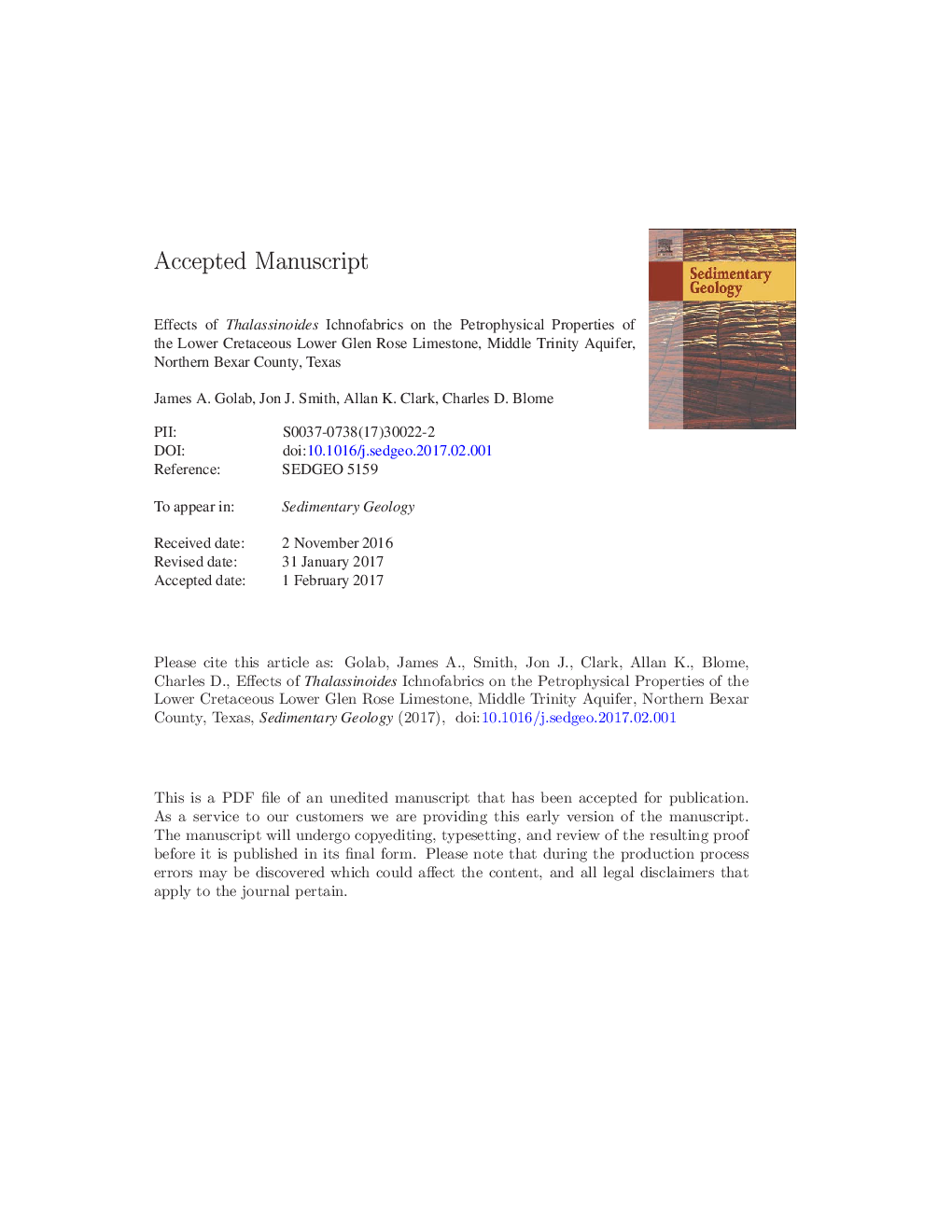| کد مقاله | کد نشریه | سال انتشار | مقاله انگلیسی | نسخه تمام متن |
|---|---|---|---|---|
| 5781404 | 1636012 | 2017 | 45 صفحه PDF | دانلود رایگان |
عنوان انگلیسی مقاله ISI
Effects of Thalassinoides ichnofabrics on the petrophysical properties of the Lower Cretaceous Lower Glen Rose Limestone, Middle Trinity Aquifer, Northern Bexar County, Texas
دانلود مقاله + سفارش ترجمه
دانلود مقاله ISI انگلیسی
رایگان برای ایرانیان
موضوعات مرتبط
مهندسی و علوم پایه
علوم زمین و سیارات
فرآیندهای سطح زمین
پیش نمایش صفحه اول مقاله

چکیده انگلیسی
The combined Edwards and Trinity aquifer system is the primary source of freshwater for the rapidly growing San Antonio and Austin metropolitan areas. The karstic Lower Cretaceous (Aptian-Albian) Lower Glen Rose Limestone (GRL) contains the middle Trinity aquifer and has been subdivided into six hydrostratigraphic units (HSUs) with distinct hydrologic characteristics. These HSUs were first identified in the subsurface via core examination at the Camp Stanley Storage Activity (CSSA) in northern Bexar County, Texas and were then correlated to associated gamma-ray and resistivity logs. The Trinity aquifer system is a telogenetic karst and fluid flow is directed primarily through solution-enhanced faults, fractures, and pervasive Thalassinoides networks because matrix porosity of both transmissive and confining HSUs is very low. Meteoric water infiltrates the Trinity aquifer through vertically-oriented faults and likely moves laterally through biogenic pores. Two 7.62 cm diameter GRL cores and well logs from monitoring wells CS-MW9-CC and CS-MW5-LGR recovered from the CSSA were used to characterize the effect such large-scale Thalassinoides networks have on the petrophysical properties (resistivity and natural gamma-ray) of four HSUs (Honey Creek, Rust, Doeppenschmidt, and Twin Sisters HSUs). Resistivity logs show that resistance values > 300 Ω-m correlate with well-developed biogenic porosity and values of 650 Ω-m are associated with solution enhancement of the Thalassinoides networks. These high resistivity zones are cyclical and are identified in muddy confining units, even when no changes in lithology or karstic development are identified. Pervasive Thalassinoides networks act as starting points for wide spread dissolution and lead to advanced karst development in transmissive HSUs. Natural gamma-ray logs do not reflect hydrologic characteristics directly, but are inversely correlated to resistivity logs and display m-scale cyclicity. Resistivity logs suggest that Thalassinoides networks are interconnected throughout strata within the GRL and when coupled with natural gamma-logs, the lateral distribution of these networks within HSUs can be correlated. Identifying such fluid pathways is of particular importance for wells not located in proximity to major faults and karstic features.
ناشر
Database: Elsevier - ScienceDirect (ساینس دایرکت)
Journal: Sedimentary Geology - Volume 351, 15 April 2017, Pages 1-10
Journal: Sedimentary Geology - Volume 351, 15 April 2017, Pages 1-10
نویسندگان
James A. Golab, Jon J. Smith, Allan K. Clark, Charles D. Blome,